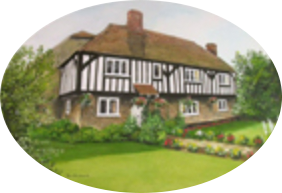Important George IV Britannia Standard Silver Vinaigrette Hudgill Burn
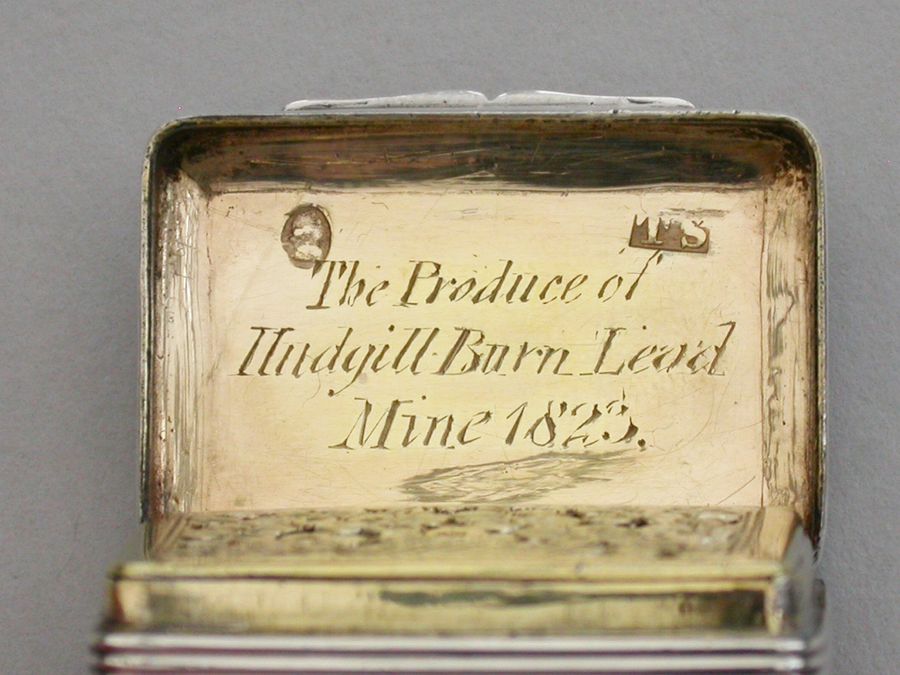
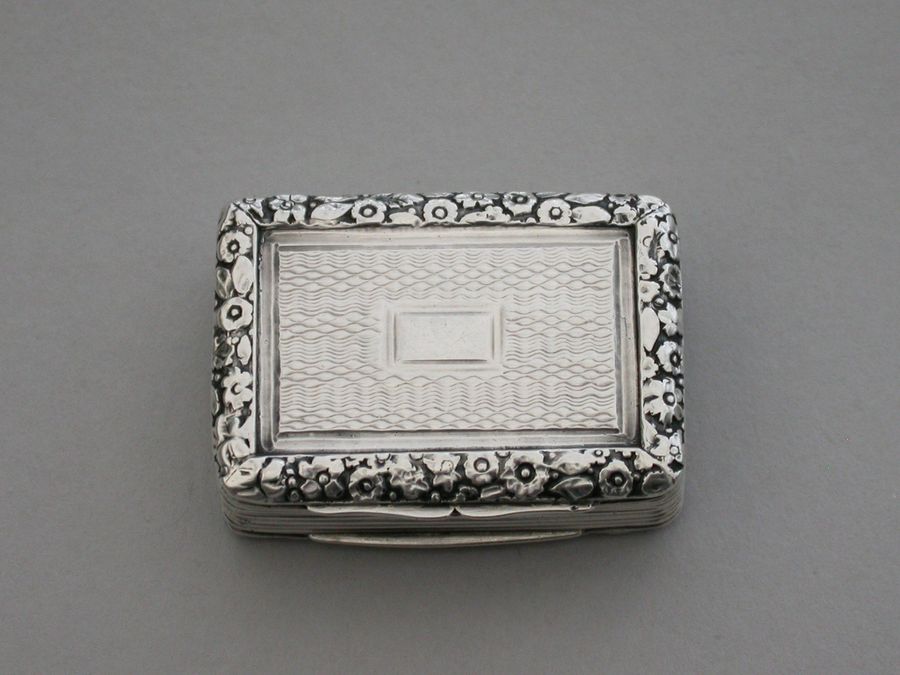
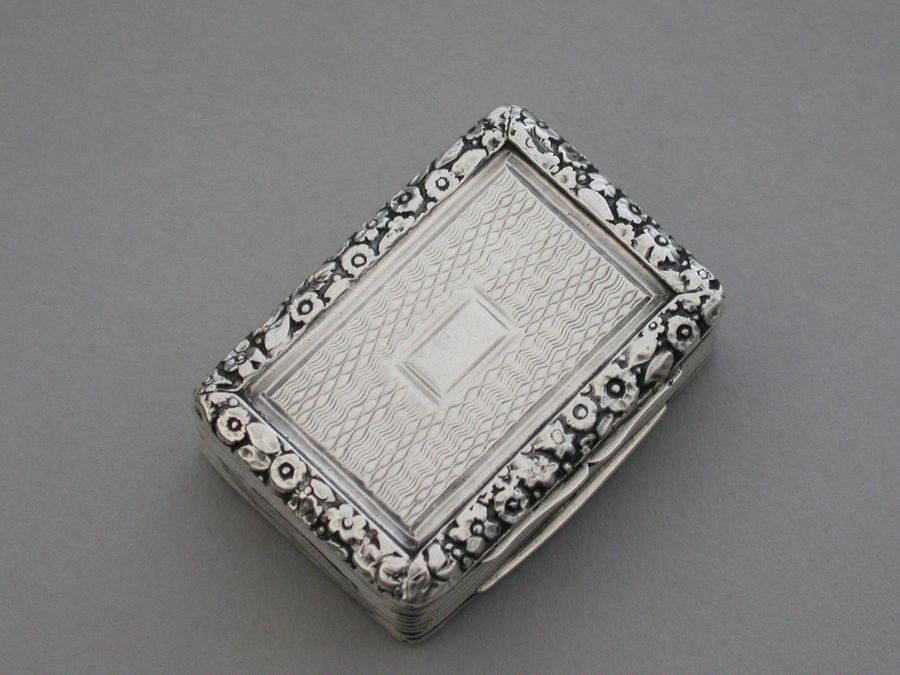
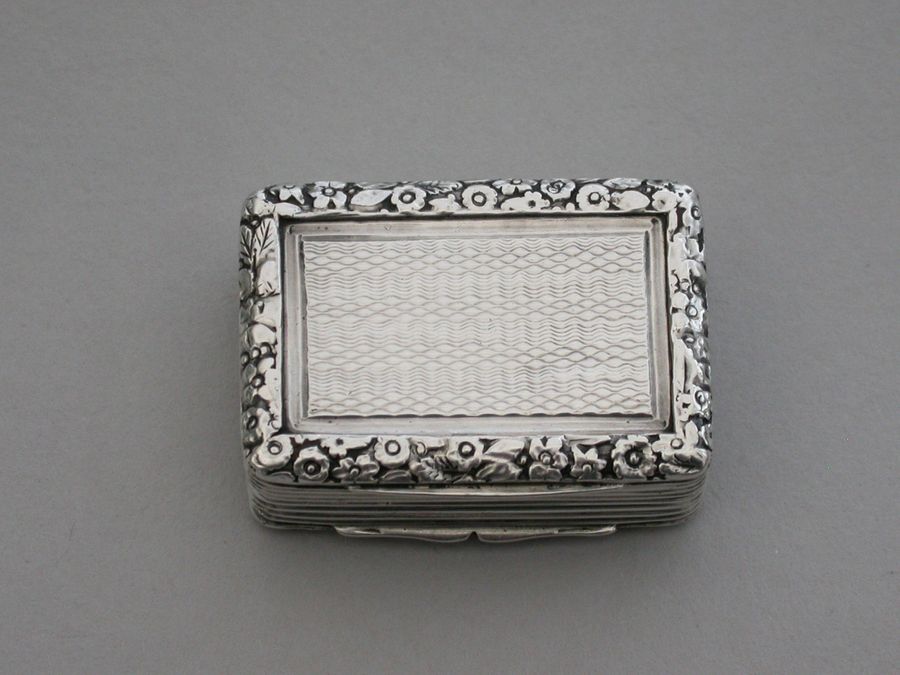
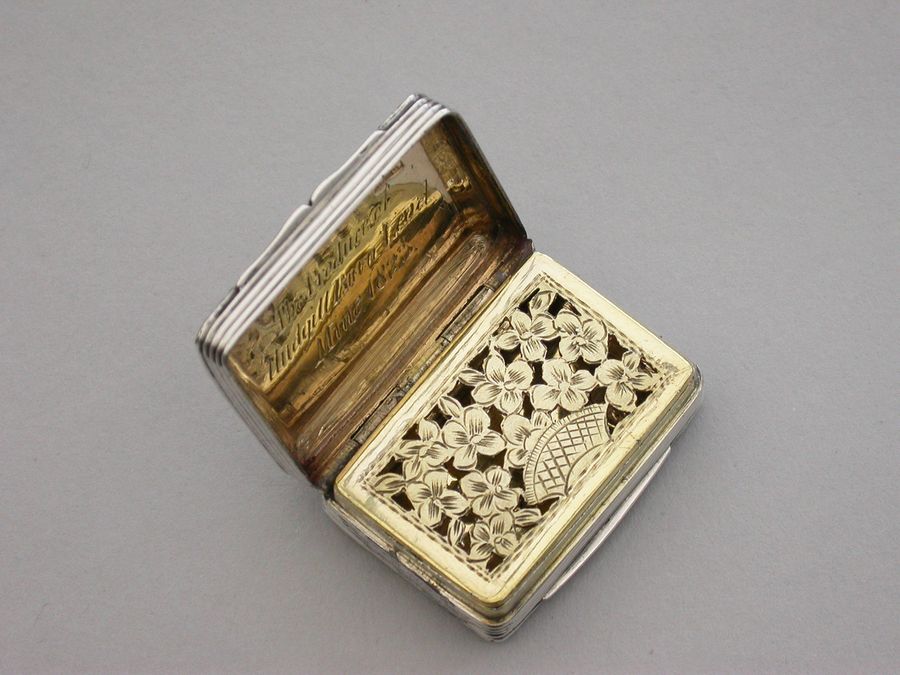
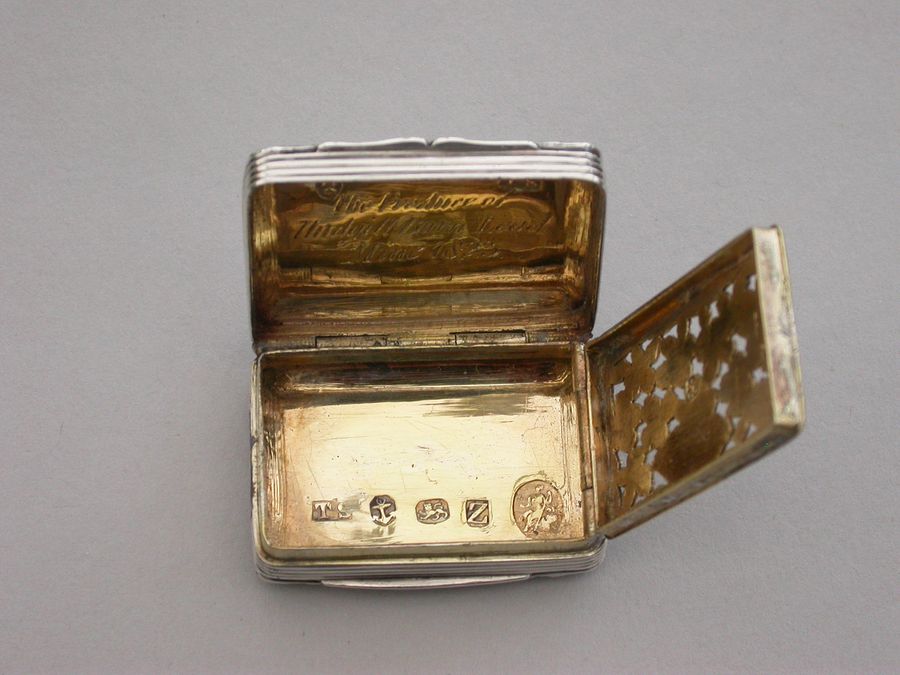

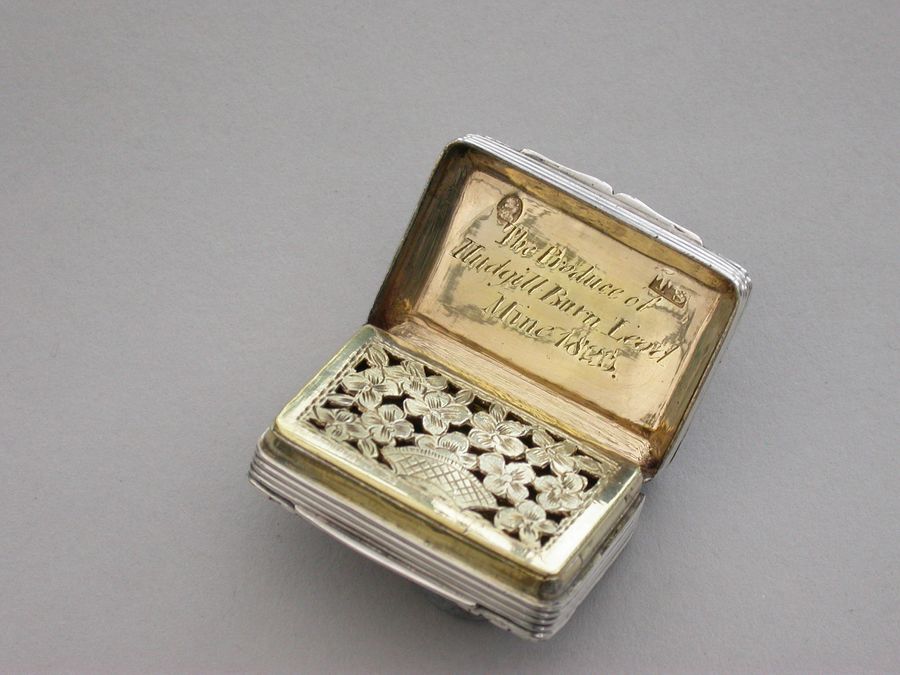
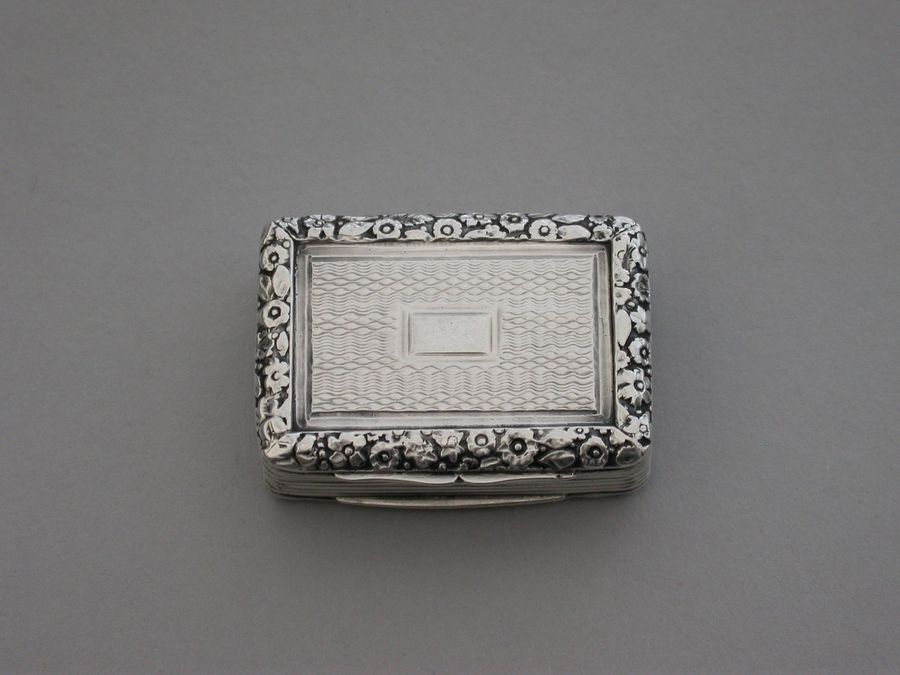


A rare and important George IV rectangular Britannia Standard silver Vinaigrette , the base and cover engine turned within a border of cast flower heads and leaves with a vacant rectangular cartouche and raised thumb-piece, reeded sides and five lugged hinge. The silver gilt grille pierced with a basket and many flower heads. Engraved inscription to the inside cover - "The produce of Hudgill Burn Lead Mine 1823".
By Thomas Shaw, Birmingham, 1823 with Britannia Standard Mark.
Constructed from silver extracted from lead mined at Hudgill Burn in the Pennines, Cumbria. Tiny amounts of silver are found in galena (lead ore), the average for the North Pennines being only 4 – 8 ounces of silver per ton of lead metal.
Literature Luddington, J. "Starting to collect Silver", pp 147-149:-
'In The Connoisseur of August, 1975, I described my discovery of what might be the rarest of all nineteenth century hallmarks. On a vinaigrette made by Thomas Shaw, with the normal Birmingham assay marks for 1823, there was an oval shield enclosing the figure of Britannia, denoting the higher standard of silver. (The Assay Master at Birmingham was unaware that such a mark had been struck in Georgian times but, during an unsuccessful search through the archives and vaults of the Assay Office for this very punch, another similar Britannia mark which had been used in the year 1844-6 was discovered.) Proudly engraved within the lid of this vinaigrette and carefully unimpinged upon by hallmarks, there were the words 'The Produce of Hudgill Burn Lead Mine' and as this as my clue I decided, if possible, to discover the history of my box, hoping that there was a romantic story attached to it. In the south of England, no one had heard of Hudgill Burn for it is a very tiny stream, even in the spates of spring, but after a comprehensive search in a nineteenth century edition of 'Bartholomew's Citizens' Atlas' of those districts in which lead had been mined in the past, I spotted the name of a hamlet called Leadgate, situated a few miles south west of Alston in Cumbria. The location and history of the mine were well known to the Abbot Hall Museum, Kendal, for the opening and closing of the Hudgill Burn mine and made significant social impact over the surrounding countryside. The locals seemed gratified to see and handle the little vinaigrette and I felt that by right it should belong to Alston. Everyone confirmed that the opening of the mine in 1814 was extremely fortuitous as the worthy brothers, John and Jacob Wilson, who were financing the project, had decided at long last that they could afford no further expenses in search of lead and had reluctantly given notice to their workers. But these resolute men, the ancestors of some of the present inhabitants of the town and neighbouring district, had faith and they greatly respected the Wilson bothers, who lived at the Manor House (now the hospitable Hillcrest Hotel) situated almost at the foot of the hill. The men elected to work on without wages until their candles were exhausted. Literally at the last moment, on their thirteenth day underground without pay, they struck a massive vein of lead. The joyous workers downed tools, and, descending the cobbled streets of Alston in high spirits, announced their find by hurling a brick of lead through the front window of the Wilsons' home. In 1821, alone, some eight thousand pounds worth of silver was extracted from the lead.
Sold - £950.00
